The Cardinals of the Holy Roman Church (original) (raw)
The Cardinals of the Holy Roman Church Biographical Dictionary Pope Benedict XV (1914-1922) Consistory of December 6, 1915 (I)
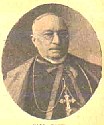
(1) 1. TONTI, Giulio
(1844-1918)
Birth. December 9, 1844, Rome, Papal States. Received the sacrament of confirmation, August 17, 1856.
Education. Studied at the Pontifical Roman Seminary, where he earned doctorates in philosophy, theology and utroque iure, both canon and civil law.
Priesthood. Ordained, December 21, 1867, Rome. Professor of theology and vice-rector of the Pontifical Urbanian Athenaeum "De Propaganda Fide," 1868-1879. Attached to the S.C. of Extraordinary Ecclesiastical Affairs. Auditor of the nunciature in France, 1879-1882; in Portugal, 1882-1892. Privy chamberlain of His Holiness.
Episcopate. Elected titular bishop of Samos, July 11, 1892. Consecrated, July 25, 1892, church of the Dame del Sacro Cuore a Villa Lante, Rome, by Cardinal Vincenzo Vannutelli, assisted by Michele dei Baroni Zezza Zaponetta, titular bishop of Calcedonia, auxiliary of Naples, and by Augusto Berlucca, titular bishop of Elenopoli. Named apostolic delegate in Santo Domingo, Haiti, and Venezuela, August 10, 1892. Apostolic administrator, ad nutum Sanctæ Sedis, of the archdiocese of Port-au-Prince and diocese of Les Gonaïves, Haiti, February 24, 1893 (1). Promoted to the titular see of Sardes, July 15, 1893. Transferred to the metropolitan see of Port-au-Prince, retaining the administration of the diocese of Les Gonaïves, ad nutum et beneplacitum Sanctæ Sedis, October 1, 1894 (2). Attended the First Plenary Council of Latin America, Rome, 1898. Transferred to the titular see of Ancira, August 23, 1902. Nuncio in Brazil (3), August 27, 1902 (4). Nuncio in Portugal, October 4, 1906. Returned to Rome because of the Portuguese revolution, October 25, 1910.
Cardinalate. Created cardinal priest in the consistory of December 6, 1915; received the red hat and the title of Ss. Silvestro e Martino ai Monti, December 9, 1915. Prefect of the S.C. of Religious, February 13, 1917. Member of the Council for the Administration of the Wealth of the Apostolic See, May 21, 1917.
Death. December 11, 1918, Rome. Buried in the tomb of the chapter of the patriarchal Vatican basilica in Campo Verano Cemetery, Rome.
Bibliography. "Cardinali defunti." Annuario pontificio per l'anno 1922, Città del Vaticano : Tipografia poliglotta vaticana, 1921, p. 66; De Marchi, Giuseppe. Le nunziature apostoliche dal 1800 al 1956. Pref. di Antonio Samoré. Roma : Edizioni di Storia e letteratura, 1957, pp. 79, 140, 216, 222 and 262; Pięta, Zenonem. Hierarchia Catholica Medii et Recentioris Aevi. Volumen IX (1903-1922). Patavii : Typis et Sumptibus Domus Editorialis "Il Messaggero di S. Antonio" apud Basilicam S. Antonii, 2002, pp. 16 and 25; Ritzler, Remigium, and Pirminum Sefrin. Hierarchia Catholica Medii et Recentioris Aevi. Volumen VIII (1846-1903). Patavii : Typis et Sumptibus Domus Editorialis "Il Messaggero di S. Antonio" apud Basilicam S. Antonii, 1979, pp. 100, 467, 496 and 501.
Webgraphy. Photographs, Araldica Vaticana.
(1) This is according to Ritzler, Hierarchia Catholica Medii et Recentioris Aevi, VIII, 501; De Marchi, Le nunziature apostoliche dal 1800 al 1956, p. 140, says that he was named on February 8, 1893.
(2) This is according to Ritzler, Hierarchia Catholica Medii et Recentioris Aevi, VIII, 467; De Marchi, Le nunziature apostoliche dal 1800 al 1956, p. 140, says that he was named on February 21, 1894.
(3) De Marchi, Le nunziature apostoliche dal 1800 al 1956, pp. 222 and 262, indicates that he was internuncio in Brazil although on p. 79, he says that the internunciature was elevated to nunciature on February 14, 1901.
(4) This is according to Ritzler, Hierarchia Catholica Medii et Recentioris Aevi, VIII, 100; De Marchi, Le nunziature apostoliche dal 1800 al 1956, p. 79, says that he was named on July 21, 1902; the latter source, p. 140, says that he was named on June 21, 1902.
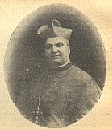
(2) 2. MISTRANGELO, Sch.P., Alfonso Maria
(1852-1930)
Birth. April 26, 1852, Savona, Italy. Received the sacrament of confirmation, May 17, 1859.
Education. Attended the Seminary of Savona. Joined the Congregation of the Clerics Poor Regular of the Mother of God of the Pious Schools (Piarists), province of Liguria, October 23, 1870; simple profession, 1871, province of Liguria; solemn profession, 1874. Piarist houses of study, 1870-1877. Received the insignias of the clerical character and the minor orders on February 28, 1875; the subdiaconate on May 13, 1875; and the diaconate on July 18, 1875.
Priesthood. Ordained, March 17, 1877, Aquis. Faculty member in Piarist schools of Finalborgo, Carcare and Ovada; rector of the Piarist school in Ovada from 1880.
Episcopate. Elected bishop of Pontremoli, January 16, 1893. Consecrated, January 22, 1893, church of S. Pantaleone, Rome, by Cardinal Lucido Maria Parocchi, bishop of Albano, vicar general of His Holiness for the City of Rome, assisted by Antonio Maria Grasselli, O.F.M. Conv., titular archbishop of Colosse, secretary of the S.C. of the Apostolic Visitation, and by Luigi Maria Canestrari, titular bishop of Terme, rector of Seminario Pio and canon of the patriarchal Liberian basilica, Rome. Promoted to the metropolitan see of Florence, June 19, 1899. Superior general of his congregation, 1900-1904.
Cardinalate. Created cardinal priest in the consistory of December 6, 1915; received the red hat and the title of S. Maria degli Angeli, December 9, 1915. Participated in the conclave of 1922, which elected Pope Pius XI.
Death. November 7, 1930, of gastric poisoning, Florence. Buried in cemetery of Trespiano (1), Florence. His remains were transferred to the present crypt underneath the chapel of the Most Blessed Sacrament in the cathedral of Santa Maria del Fiore, Florence when Cardinal Giovanni Benelli, archbishop of Florence, had it finished (2).
Webgraphy. Photographs, Araldica Vaticana.
(1) This is according to Hierarchia Catholica Medii et Recentioris Aevi, IX, 16. Annuario Pontifico per l'anno 1930, p. 80, says that he was buried in the cemetery of Soffiano.
(2) This is the inscription on his vault, kindly provided by Mr. Eman Bonnici:
ALPHONSVS Ma CARD. MISTRANGELO S.P. MDCCCLXXXXIX _ MDCCCCXXX
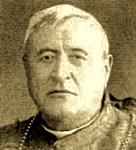
(3) 3. CAGLIERO, S.D.B., Giovanni
(1838-1926)
Birth. January 11, 1838, Castelnuovo d'Asti, archdiocese of Turin, Piedmont (later Italy). Son of Pietro Cagliero and Teresa Musso. His father died when he was very young. He was accepted by Giovanni Bosco, future saint, in the nascent Salesian oratory in Turin. His cousin, Father Cesare Cagliero, S.D.B., was procurator general of the Salesians.
Education. Studied at the Seminary of Castelnuovo d'Asti; and at the University of Turin. Joined the Pious Society of St. Francis de Sales (Salesians of Don Bosco), Turin, 1851. Received clerical habit from Don Bosco and was his favorite pupil. Classmate of Domenico Savio and Michele Rua, future Salesian saints.
Priesthood. Ordained, June 14, 1862, Turin. Faculty member of Salesian House of Studies, Turin, 1862-1875. Led first ten Salesians to South America and established five houses in Uruguay and Argentina, 1875-1877. Spiritual director of his society and first General Director of Daughters of Mary Auxiliary, Turin, 1877-1884. Pro-apostolic vicar of the new vicariate of Northern Patagonia, Argentina, November 20, 1883; the vicariate had been erected on the previous November 16.
Episcopate. Elected titular bishop of Magido, October 30, 1884. Consecrated, December 7, 1884, Turin, by Cardinal Gaetano Alimonda, archbishop of Turin, assisted by Emiliano Manacorda, bishop of Fossano, and by Giovanni Battista Bertagna, titular bishop of Cafarnao, auxiliary of Turin. Promoted to titular archbishop of Sebaste in Armenia Prima, March 24, 1904. Apostolic visitor to Italian dioceses of Bobbio, Piacenza, Savona, and Tortona, 1904. Apostolic delegate and legate extraordinary to Costa Rica, June 10, 1908. Apostolic delegate and legate extraordinary to Nicaragua, October 26, 1908.
Cardinalate. Created cardinal priest in the consistory of December 6, 1915; received the red hat and the title of S. Bernardo alle Terme, December 9, 1915. On December 9, 1915, he was named member of the SS. CC. of Religious, Propaganda Fide, and Rites; and of the S. C. for Extraordinary Ecclesiastical Affairs on April 10, 1919. Opted for order of cardinal bishops and suburbicarian see of Frascati, December 16, 1920; he took possession of the see on January 16, 1921. Participated in the conclave of 1922, which elected Pope Pius XI. Papal legate to the Eucharistic Congress of Frascati, August 5, 1923. He was protector of the Sisters Adoratrices of the Most Holy Sacrament of Buenos Aires (November 16, 1916); and of the Venerable Confraternity of Devotees of Jesus of the Calvary (May 9, 1917). He composed several musical works. He was the first Salesian cardinal.
Death. February 28, 1926, at 3:30 a.m., Rome. The funeral took place on the following March 3 in the basilica of Sacro Cuore, in via Marsala, Rome; the requiem mass was celebrated by Felice Ambrogio Guerra, S.D.B., titular archbishop of Verissa, assisted by the clerics of the Pontifical Chapel. At the end of the ceremony, Cardinal Vincenzo Vannutelli, bishop of Ostia and Palestrina, dean of the Sacred College of Cardinals, imparted the absolution. Buried in the sepulchre of the S.C. for the Propagation of the Faith, Campo Verano Cemetery, Rome. In 1964 his remains were transferred to Argentina; and on May 14, they were buried in front of the main alater of the cathedral Mater Misericordiæ of Viedma (1). By presidential decree of April 7, 1965, a commemorative postal stamp honoring the cardinal was issued by the Republic of Argentina.
Bibliography. Bodas de plata episcopales del Exmo. y Reverendísimo monseñor doctor don Juan Cagliero, arzobispo titular de Sebaste y delegado apostólico en Centro América. San José de Costa Rica : Tip. Nacional, 1910; Cagliero, Giovanni. Proyecto de nueva circunscripción eclesiática de Honduras. Incidente suscitado por el Excmo, Sr. Delegado Apostólico, Monseñor Juan Cagliero. Corporate author: Honduras. Ministerio de Relaciones Exteriores ; Honduras.; Presidente, 1912-1913 (Manuel Bonilla). Tegucigalpa : Tipografía nacional, 1913. Responsibility: Publicación de la Secretaría de Relaciones Exteriores de la República de Honduras, 1913; Cagliero, Giovanni ; Silva, António Ferreira da. Unità nella diversità: le visite di Mons. Cagliero in Brasile, 1890, 1896. Roma : LAS, 1990. (Piccola biblioteca dell'Istituto storico salesiano ; 12). Note: Chiefly in Italian, with some letters in Portuguese and Spanish. Responsibility: António Ferreira da Silva; Cassano, Giovanni. Il cardinale Giovanni Cagliero : 1838-1926. Torino : Soc. ed. internazionale, 1935; Castano, Luigi. I salesiani in Argentina : il cardinal Cagliero e la redenzione della Patagonia. Roma : Casa editrice Carlo Colombo, 1942. Corporate author: Centro italiano di studi americani.; Comitato storico-politico. Conference author: Conferenze della Istituzione "Massimo Piccinini" ; (29th :; 1942:; Palazzo Antici-Mattei, Rome, Italy). At head of title:; Centro Italiano di Studi Americani, Comitato storico-politico, Conferenze della Istituzione "Massimo Piccinini"; "Em. Cagliero (Jean) in "Liste des cardinaux par order alphabétique." Annuaire Pontifical Catholique de 1924. Paris : Maison de la Bonne Presse, 1923, p. 109; Entraigas, Raul A. El Apóstol de la Patagonia. Rosario, Argentina: Apis, 1956; "Giovanni Cagliero" in Annuario pontificio per l'anno 1926. Roma : Tipografia Poliglotta Vaticana, 1926, p. 36; Imperatori, Ugo E. Giovanni Cagliero, 1838-1926. Bologna : L. Cappelli, 1931. (I grandi cardinali italiani nella vita e nella storia, 10); L'Osservatore Romano [electronic resource]. Città del Vaticano : L'Osservatore Romano, LX, n. 50 (19,987) (March 1-2, 1926), p. 3; LX, no. 51 (19,988) (March 3, 1926); and LX no. 51 (19,989) (March 4, 1926), p. 3; Pablo de Salvo, Francisco. Cagliero civilizador. Buenos Aires : Editorial Difusión, 1939; Pięta, Zenonem. Hierarchia Catholica Medii et Recientoris Aevi. Volumen IX (1903-1922). Patavii : Typis et Sumptibus Domus Editorialis "Il Messaggero di S. Antonio" apud Basilicam S. Antonii, 2002, pp. 16, 21, 22 and 334; Retornó Monseñor Cagliero; repatriación de sus restos: Roma, 1926-Viedma, 1964. Buenos Aires : Impr. del Congreso de la Nación, 1966; Ritzler, Remigium, and Pirminum Sefrin. Hierarchia Catholica Medii et Recientoris Aevi. Volumen VIII (1846-1903). Patavii : Typis et Sumptibus Domus Editorialis "Il Messaggero di S. Antonio" apud Basilicam S. Antonii, 1979, p. 360.
Webgraphy. Biography by Pietro Stella, in Italian, Dizionario Biografico degli Italiani - Volume 16 (1973), Treccani; biography, in Italian, diocese of Frascati; biography by Don Fiorenzo Carbonari, in Italian, La Nostra Valle on line; and brief biographical data, in Italian, sixth paragraph on page, Castelnuovo Don Bosco - Notizie Storiche di A. Baungartner; photographs and portrait, Araldica Vaticana.
(1) This is the text of the epitaph inscribed on the marble slab placed on his tomb, taken from Retornó Monseñor Cagliero; repatriación de sus restos, p. 33:
HEIC MORTALES EXUVIAS QUAS ROMÆ PRIDIE KAL. MART, A. D. MCMXXVI RELIQUIT LXXXVIII ÆTATIS ANNUM AGENS JOANNES CAGLIERO SANCTI JOANNIS BOSCO DISCIPULUS SANCTÆ ROMANÆ ECCLESIÆ CARDINALIS PRÆCLARUS PATAGONIÆ APOSTOLICUS VICARIUS CUIUS IN CHRISTI REGNI DILATANDO FERVOREM ULTIMÆ AUSTRALIS AMERICÆ REGIONES EXIMIIS OPERIS PLURIMISQUE LABORIBUS SUNT EXPERTÆ BENIGNO SUMMI PONTIFICIS PAULI VI IUSSU TRANSLATAS UNIVERSUS POPULUS VIEDMENSIS EIUSQUE ECC. EP. JOSEPHUS BORGATTI CUNCTO CLERO OMNIBUSQUE AUCTORITATIBUS ADSTANTIBUS MAGNO EXCEPERUNT CONCURSU INQUE HOC TEMPLO SOLLEMNI RITU CONDIDERUNT DIE XIV MENSIS MAI ANNO REP. SAL. MCMLXIV. HINC IPSE ARGENTINO POPULO RELIGIONIS SIT PERPETUUS CUSTOS SEMPERQUE IUSTITIÆ RECTUM PATEFACIAT CALLEN
(Scripsit R. D. Robertus Jacoangeli)

(4) 4. FRÜHWIRTH, O.P., Andreas
(1845-1933)
Birth. August 21, 1845, St. Anna am Aigen, diocese of Seckau, Austria, Austrian Empire. His baptismal name was Franz. His last name is also listed as Frühwirt.
Education. Joined the Order of Preachers (Dominicans), September 13, 1863, Graz; changed his name to Andreas; professed, September 13, 1864. Studied at Dominican houses of studies, Graz, Austria (philosophy and theology); and at the Pontifical Roman Academy of S. Tommaso d'Aquino, Rome, from 1869 to 1870.
Priesthood. Ordained, July 5, 1868, Graz. Lector of theology, Pontifical Roman Academy of St. Thomas Aquinas, July 14, 1870. Named magister in theology. Professor of theology for six years in the Dominican College of Graz; prior, 1872-1875. Prior in Vienna, 1876-1880; provincial of Austria-Hungary, from April 20, 1880 to 1891. Elected master general of his order in the general chapter of Lyon, September 19, 1891; occupied the post until May 21, 1904. Founder of Analecta Ordinis Praedicatorum, 1892. Apostolic visitor to the convent of Klosterneuburg, Austria, of the Clerics Regular of Saint Augustine, December 19, 1906. Consultor of the Supreme S.C. of the Holy Office, December 19, 1906. Named nuncio in Bavaria, October 26, 1907.
Episcopate. Elected titular archbishop of Eraclea, November 5, 1907. Consecrated, November 30, 1907, National Teutonic church of S. Maria dell'Anima, Rome, by Cardinal Rafael Merry del Val, secretary of State, assisted by Diomede Panici, titular archbishop of Laodicea, secretary of the S.C. of Rites, and by Giuseppe Cecchini, O.P., titular bishop of Alicarnaso, archpriest of Altamura and Acquaviva delle Fonti. His episcopal motto was Fide in Caritate.
Cardinalate. Created cardinal priest in the consistory of December 6, 1915; received the red hat and the title of Ss. Cosma e Damiano, deaconry elevated pro illa vice to title, December 7, 1916. Remained in nunciature until November 1916. Participated in the conclave of 1922, which elected Pope Pius XI. Camerlengo of the Sacred College of Cardinals, May 23, 1923 until March 24, 1924. Papal legate to the consecration of cathedral of Linz, Austria, April 12, 1924. Grand Penitentiary, January 8, 1925 until December 9, 1927. Chancellor of the Holy Roman Church, December 19, 1927 until his death. Opted for the title of S. Lorenzo in Damaso, assigned to the chancellorship, December 19, 1927.
Death. February 9, 1933, Rome. Buried in the parish church of St. Anna am Aigen, diocese of Seckau (1). A bust in his honor was erected in his native town. At his death, he was the oldest member of the Sacred College of Cardinals.
Bibliography. Daniel, Charles; Paul-Marie Baumgarten; Antoine de Waal. Rome; le chef suprême l'organisation et l'administration centrale de l'église. Paris : Plon, 1900, p. 677; Pięa, Zenonem. Hierarchia Catholica Medii et Recentioris Aevi. Volumen IX (1903-1922). Patavii : Typis et Sumptibus Domus Editorialis "Il Messaggero di S. Antonio" apud Basilicam S. Antonii, 2002, pp. 16, 23, 25 and 195-196.
Webgraphy. Photographs, portraits and arms, Araldica Vaticana.
(1) This is the text of a memorial slab placed in the apse on the wall next to the sacristy door, kindly provided by Mr. Eman Bonnici, from Malta:
HIER RUHT SEINE EMINENZ KARDINAL KANZLER ANDREAS FRÜHWIRTH GEB. IN AIGEN AM 21.8.1845 GEST. IN ROM AM 9.2.1933
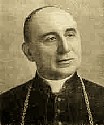
(5) 5. SCAPINELLI DI LEGUIGNO, Raffaele
(1858-1933)
Birth. April 25, 1858, Modena, Duchy of Modena and Reggio. Of a noble family from Reggio, attached to the court of the duke. After the Revolution of 1859, the family returned to Reggio.
Education. Studied at the Seminary of Reggio-Emilia, initally as an external student and from February 1, 1875 to September 15, 1878, as an intern student; he also studied at the Pontifical Academy of Ecclesiastical Nobles, Rome, from 1884, obtaining a doctorate in utroque iure, both canon and civil law in 1887.
Priesthood. Ordained, 1881 (1). Celebrated his first mass in the parish church of Ss. Giacomo e Filippo on September 24, 1881.Further studies, 1884-1887. Professor of canon law, Seminary of Reggio-Emilia, 1887-1889. Entered the service of the Holy See as addetto in the Secretariat of State in 1889. Secretary of the nunciature in Portugal, July 25, 1891 until 1894. In 1893, he was ablegato apostolic to bring the red biretta to neo-Cardinal Victor-Lucien-Sulpice Lecot in Paris. Auditor of the nunciature in Holland, February 13, 1894 until 1905. Privy chamberlain supernumerario of His Holiness, May 3, 1889. Privy chamberlain de numero participantium of His Holiness, December 29, 1899; reappointed, August 51 1903. Canon of the patriarchal Vatican basilica, April 11, 1902. Faculty member of the Pontifical Ecclesiastical Academy. Secretary of the Commission for Administration of Wealth of Holy See, November 26, 1904. Domestic prelate of His Holiness, July 25, 1905. Protonotary apostolic supra numerum, August 29, 1905. Consultor of the Commission for the Codification of Canon Law, 1906; its secretary, 1908. In charge of the secretariat of the S.C. of Extraordinary Ecclesiastical Affairs, December 16, 1907. Secretary of the S.C. of Extraordinary Ecclesisatical Affairs, March 18, 1908. Consultor of the Supreme S.C. of the Holy Office, April 23, 1908. Consultor of the S.C. Consistorial, November 4, 1908. Named nuncio in Austria-Hungary, January 27, 1912.
Episcopate. Elected titular archbishop of Laodicea, January 30, 1912. Consecrated, February 25, 1912, Matilda chapel, Vatican Apostolic Palace, by Cardinal Rafael Merry del Val, secretary of State, assisted by Vittorio Amedeo Ranuzzi de' Bianchi, titular archbishop of Tiro, master of chamber of His Holiness, and by Agostino Zampini, O.S.A., titular bishop of Porfireone, papal sacristan.
Cardinalate. Created cardinal priest in the consistory of December 6, 1915; the pope sent him the red biretta with an apostolic brief dated December 6, 1916. Decorated with the grand cross of the Austrian Order of Sankt Stefan, 1916. Remained as pro-nuncio in Vienna until September 1916. Received the red hat and the title of S. Girolamo degli Schiavoni, December 7, 1916. On December 7, 1916, he was named member of the SS.CC. of the Council, Rites, Extraordinary Ecclesiastical Affairs, and Ceremonial. On November 17, 1917, he was named member of the S.C. of Religious. On November 29, 1917, he was named member of the S.C. of the Oriental Church. n November 7, 1918, he was named member of the S.C. Consistorial. Prefect of the S.C. of Religious, December 19, 1918 to March 6, 1920. On January 22, 1921, he was named member of the S.C. of Propaganda Fide. Participated in the conclave of 1922, which elected Pope Pius XI. Camerlengo of the Sacred College of Cardinals, March 24, 1924 until March 30, 1925. Named member of the S.C. of Seminaries and Universities on April 20, 1926. Papal legate to the Eucharistic Congress, Piacenza, Italy, April 30, 1926. Papal Datary, July 22, 1930 until his death.
Death. September 16, 1933, in Casa del Clero di Villa San Camillo, Forte dei Marmi, Massa Carrara. The funeral took place in the basilica of Sant'Ambrogio e Carlo al Corso, Rome, on the following September 20. Buried in the chapel of the S.C. for the Propagation of the Faith in Campo Verano Cemetery, Rome.
Bibliography. "Em. Scapinelli di Leguigno (Raffaele)" in "Liste des cardinaux par order alphabétique." Annuaire Pontifical Catholique de 1932. Paris : Maison de la Bonne Presse, 1932, p. 116; "Em. Scapinelli di Leguigno (Raffaele) in "Nécrologe", "Cardinaux", Annuaire Pontifical Catholique de 1934. Paris : Maison de la Bonne Presse, 1934, p. 937; Forniciari, Roberto. Le genealogie episcopali dei vescovi di Reggio Emilia del secolo XX : i vescovi di Reggio e quelli originari della diocesi e della provincia, con note sugli ultimi vescovi di Guastalla e su Claudio Rangoni (1559-1621) vescovo di Reggio. Presentazione di Mons. Giovanni Costi. Reggio Emilia : Antiche Porte editrice, 2014; Pięta, Zenonem. Hierarchia Catholica Medii et Recentioris Aevi. Volumen IX (1903-1922). Patavii : Typis et Sumptibus Domus Editorialis "Il Messaggero di S. Antonio" apud Basilicam S. Antonii, 2002, pp. 16, 22 and 218; Squicciarini, Donato. Nunzi apostolici a Vienna. Città del Vaticano : Libreria Editrice Vaticana, 1998, pp. 244-246.
Webgraphy. Photographs and arms, Araldica Vaticana.
(1) This is according to Forniciari, Le genealogie episcopali dei vescovi di Reggio Emilia del secolo XX, p. 98. "Em. Scapinelli di Leguigno (Raffaele)" in "Liste des cardinaux par order alphabétique." Annuaire Pontifical Catholique de 1932, p. 116; and Pięta, Hierarchia Catholica Medii et Recentioris Aevi, IX, 218, say that he was ordained in 1884.
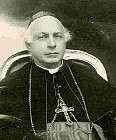
(6) 6. GUSMINI, Giorgio
(1855-1921)
Birth. December 9, 1855, Gazzaniga, diocese of Bergamo, Lombardy, Austrian Empire. Son of Santo Gusmini and Maddalena Cagnoni; the father died when Giorgio was five years old.
Education. Studied at the Seminary of Bergamo, from November 4, 1869-1875 (ginnasiali and liceali studies); then, sent to Rome, he resided at Collegio Cersaoli; studied at the Pontifical Roman Athenaeum "S. Apollinare", from April 1875 (philosophy and theology; obtained a doctorate in theology on July 7, 1878); finally, attended the Royal University of Padua, where he obtained a doctorate in belle lettere, in 1882.
Priesthood. Ordained, September 8, 1878, Rome, by Giulio Lenti, titular archbishop of Side, vice-gerent of Rome. Professor of letters and philosophy at the Seminary of Bergamo, 1882-1888. Professor of letters, philosophy and history at Collegio San Alessandro, Bergamo, 1888-1890. Pastoral ministry in the diocese of Bergamo, 1878-1880. Further studies, 1880-1882. One of the founders of Società Cattolica Universitaria, now F.U.C.I. Pastoral ministry in Bergamo, 1888-1910. Municipal counselor and president of the Bureau of Beneficence of Bergamo; provincial counselor of Mandamento di Gandin, 1886-1902. Archpriest and vicar foraneus in Clusone, 1902. Privy chamberlain supra numerum, December 16, 1901; reappointed, October 20, 1903. Provost of the parish of S. Alessandro in Colonna, the most populous parish of Bergamo, 1909. Ecclesiastical assistant of the diocesan board of the Catholic Action and member of the administrative council of the newspaper "L'Eco di Bergamo". Prosynodal examiner and socius of the council of vigilance. He published several works among them, "La vita spirituale" in four volumes; "La missione sociale del clero"; "Le omelie populari"; and a historical summary of Italian literature and a shorter version of the same for secondary schools.
Episcopate. Elected bishop of Foligno, April 15, 1910. Consecrated, May 16, 1910, Bergamo, by Giacomo Maria Radini Tedeschi, bishop of Bergamo, assisted by Luigi Spandre, bishop of Asti, and by Antonio Padovani, titular bishop of Canope, auxiliary of Cremona. His epsicopal motto was Fortiter et Suaviter. Promoted to the metropolitan see of Bologna, September 8, 1914.
Cardinalate. Created cardinal priest in the consistory of December 6, 1915; received the red hat and the title of S. Susanna, December 9, 1915.
Death. August 24, 1921, at 7 a.m., after a long illness, Bologna. The funeral, celebrated by Cardinal Vittorio Amedeo Ranuzzi de' Bianchi, took place on August 25, 1921, in the metropolitan cathedral of Bologna. Vincenzo Bacchi, bishop of Faenza, Paolino Giovanni Tribbioli, O.F.M.Cap., bishop of Imola, Gherardo Sante Menegazzi, O.F.M.Cap., bishop of Commacchio, and other prelates were also in attendance. Buried in the Carthusian cemetery of Bologna. Transferred to the metropolitan cathedral of Bologna, April 22, 1923; the following day, his remains were buried in the chapel of S. Anna (1).
Bibliography. Il Cardinale Giorgio Gusmini. Bergamo : Sc. tip. Patronato di Bergamo, 1971. Contents: Pino Gusmini. Il pensiero sociale del card. Giorgio Gusmini nel movimento cattolico e nell'azione pastorale.--Francesco Vistalli. Biografia del card. Giorgio Gusmini (1855-1921); Meluzzi, Luciano. I vescovi e gli arcivescovi di Bologna. Bologna : Grafica Emiliana, 1975. (Collana Storico-Ecclesiastica, 3), pp. 566-572; Valoti, Piermauro. Il Cardinale Giorgio Gusmini. Bergamo : Società Editora S. Alessandro, 1955.
Webgraphy. Biographical data, in Italian, archdiocese of Bologna; photographs, portrait and arms, Araldica Vaticana; Il Cardinale Gusmini, successore di Benedetto XV a Bologna by Marco Mancini, ACI Stampa, Bologna, 24 agosto, 2021 / 10:00 AM.
(1) In the south side, first pillar on the south side thereof, there is a memorial tablet, a coat of arms of the cardinal at the top, then a portrait bust, by Arturo Orsoni, 1923, with the legend FORTITER ET SUAVITER; and the text of the inscription, provided by Mr. Mark West, London, England:
HONORI ET QUIETI GEORGII GUSMINI DOMO BERGAMO PRAESB. CARD. T.S. SUSANNAE. ARCHIEP. BON VIRI INGENIO ET SOLLERTIA PRAESTANTISS DE RE SOCIALI EGREGIE MERITI QUI. PRAEP. ECCL. FULGINATIUM. ANN. IV. NOSTRAE. VII NITORE VIRTUTUM FACTIS SCRIPTISQUE UTRAMQUE HONESTAVIT DEC. SUM. CIV. LUCTU. IX. K. SEPT. A. MCMXXI. ANN. NAT. LXVI
and then at the foot of pillar just above the floor are the words
QUEM CLERUS POPULUSQUE E COEMITERIO PUBLICO ELATUM IN HOC MONUM. STIPE CONLATA EXSTRUCTO COMPOSUERE IX. K. MAIAS. AB. EIUS. OB. A. SECONDO

BONAZZI, O.S.B., Benedetto
(1840-1915)
Birth. October 12, 1840, Marigliano, diocese of Nola, Campagna, Italy. He was the second of six children of Count Nicola, Baron of San Nicandro, and Adelaide Sorrentino of the Barons of Pomigliano.
Education. Admitted to the Benedictine Abbey of La Trinità della Cava in Cava de' Tirreni at the early age of seven, he began forming part of its cloistered community on November 6, 1849. Upon finishing his studies at the school of the Santissima Trinità of Cava de' Tirreni, he professed his vows in the Benedictine Order at the Abbey of Montacassino on August 15, 1859. Specializin in Ancient Greek and Latin, he graduated from the University of Naples on December 12, 1865. As a philosopher, orator and writer, he was member of several academies and cultural associations.
Priesthood. Ordained, December 19, 1863, in Naples by Tommaso Michele Salzano OP., auxilary bishop of Naples. Named professor of the University of Naples on November 27, 1872, he declined the position, preferring the school of Badia Cavense of which he was placed in charge in 1878. With his principal interest being pedagogy, he sought to reform the system of Greek teaching in schools. He authored numerous scholarly texts which inspired new methods of teaching; one of his works was commended by the Seventh Italian Pedagogical Congress. His most important endeveour, which received acclaim across Europe, remains however the Dizionario greco-italiano, which was in print from 1880 to 1927 with twenty-five editions, by the publishers Morano di Napoli.
Episcopate. Receiving the title of titular prior of Lirine in 1886, he was named vicar general of the Badia Cavense in 1892. Upon the death of Abbot Michele Morcaldi on March 7, 1894, Pope Leo XIII appointed him abbot of the Cava de' Tirreni Abbey and on April 6, 1900, visitor general of the Cassinese monasteries. Subsequently, at the death of Cardinal Donato Maria Dell'Olio, archbishop of Benevento, Leo XIII chose him as his successor on June 9, 1902. He received his episcopal consecration two days later at the Basilica of Saint Paul Outside the Walls in Rome from Cardinal Lucido Maria Parocchi, bishop of Porto e Santa Rufina, assisted by Felix-Marie de Neckere, titular archbishop of Melitene, and by Diomede Panici, titular archbishop of Laodicea in Frigia. He took possession of the archdiocese on the following August 24.
Cardinalate. Various sources, including the Fondazione Benedetto Bonazzi Onlus, active until this very day in Benevento, state that upon his untimely death, he was “on the vigil of his elevation to the rank of cardinal, which Pope Benedict XV had decided to promote, having greatly appreciated his gifts”.
Death. April 23, 1915, Benevento. Taken suddenly ill after preaching a Lenten sermon, he died after a short illness, being assisted on his deathbed by Alessio Ascalesi, bishop of Sant'Agata dei Goti, future cardinal archbishop of Naples. Buried in the old cemetery chapel of Santa Clementina, Benevento. In 2015, his remains were transferred to the newly embellished crypt of the city’s cathedral.
Webgraphy.Biography, in Italian, by Gerardo Bianco - Dizionario Biografico degli Italiani - Volume 11 (1969), Treccani; Benedetto Bonazzi. Il Momanco, l'Arcivescovo di Benevento, lo Studioso (1840-1915), Fondazione Benedetto Bonazzi - Onlus, Piazza Orsini, 27 - 82100 Benevento, Italy; biography, in English, Wikipedia.
©1998-2021 Salvador Miranda.